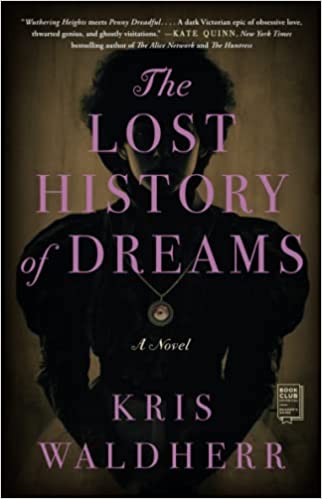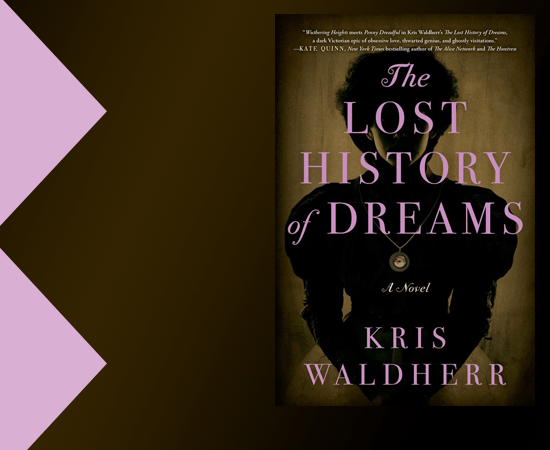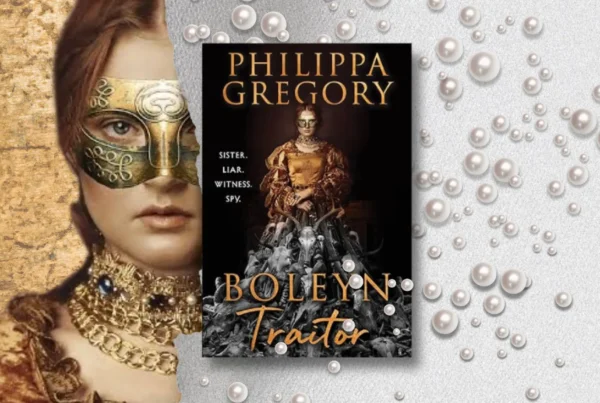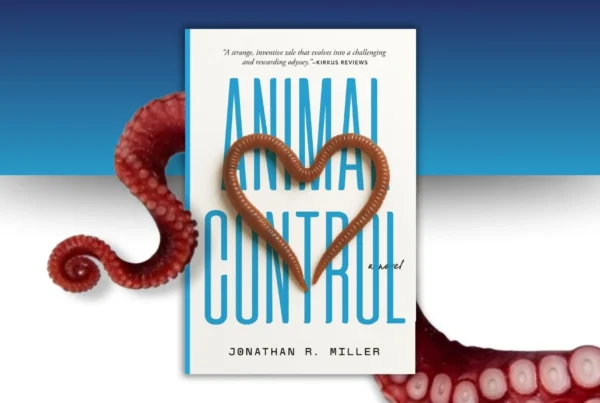The Lost History of Dreams by Kris Waldherr’
The Lost History of Dreams (Atria Books) may be Kris Waldherr’s debut novel, but this tense, atmospheric and sensual Gothic mystery has been influenced by both her earlier writing and her work as an illustrator and designer.
The novel begins in Victorian-era London when historian-turned-post-mortem photographer Robert Highstead receives a mysterious letter. He reluctantly goes to the home of his estranged brother, only to learn that their cousin, the famed poet Hugh de Bonne, has been found dead in the bath, and an urgent bequest propels Robert to the Shropshire moors with his cousin’s corpse.
But before he’s allowed to bury—and photograph—him, Robert must unravel the dark secrets surrounding the poet’s doomed marriage to a woman named Ada. Learning these secrets has the power to change many lives, most of all Robert’s.
Waldherr, author of Bad Princess, Doomed Queens, The Book of Goddesses and other publications that celebrate story with art and words, talked to BookTrib about her plunge into thriller fiction.
BookTrib: What was the first spark of an idea for this novel?
KW: My first spark was the title itself! It came to me one morning when I was half-awake; I scribbled the title down on a post-it note and wondered what it could mean. About a year later, I dreamt of a man and woman dressed in mid-Victorian clothing arguing over an inheritance in a room lit by only a fireplace. When I woke up, I had no idea what the dream was about, but I wrote it down. Eventually I connected the title to my dream and began to write. Many thousands of words later, here we are.
BT: Have you long been interested in Victorian post-mortem photography?
KW: Though I’ve long been aware of the Victorian tradition of post-mortem photography, I found the subject simultaneously fascinating and disturbing. After all, as beautiful as these photographs can be, they’re of corpses; to modern sensibilities, post-mortem photography can seem macabre, though Victorians were very matter-of-fact about it. However, the deeper I got into The Lost History of Dreams the more became apparent that Robert, my protagonist, had to be a post-mortem photographer—the plot demanded it.
From there, I researched all I could about post-mortem photography in order to write about it as respectfully as possible. I was careful to avoid popular misconceptions, such as the belief that corpses were photographed standing using a posing frame for support. Posing frames were only used on the living; occasionally a corpse might be propped upright against a surface to be photographed, which gave it the appearance of standing.
BT: Am I correct to say there are flashes of the spirit of Arthur Conan Doyle, Wilkie Collins, and Bram Stoker in your novel? Which 19th-century novelists most interest you?
KW: I think any novelist writing a Victorian-set mystery or gothic would find it impossible to avoid being influenced by Doyle, Wilkie or Stoker—they revolutionized and popularized the genre. That written, I found myself more directly influenced by Emily and Charlotte Bronte, with their use of atmosphere, setting, and psychology. The structure of Wuthering Heights was a definite inspiration, with its obsessive love story and all the intergenerational grudges. While I wrote, I also thought of Jane Eyre; particularly those post-prandial conversations when Rochester speaks of his past to Jane. These definitely mirror the scenes in Lost History in which Isabelle relates the story of Ada and Hugh to Robert over five nights.
BT: I love your descriptive writing. It is powerfully evocative. Any secrets to your technique you want to share?
KW: I think my training as an artist makes me sensitive to visual detail—or at least I hope so! In important scenes, I aim to make sure to include descriptions involving a minimum of three senses, to help bring the scene to life. I think I was already doing this organically, but then I read a craft book where Diana Gabaldon mentioned something similar. I think her advice was along the lines of “to make a scene three dimensional, use three senses,” though I’m sure it’s probably more complex than this!
BT: How did you make use of your artist background here?
KW: Before I turned to fiction writing, I illustrated books, which trained me to be very aware of details: what type of chair is someone sitting on? What texture is their clothing? What sort of trees are in the forest? and so on. Book illustration, especially for picture books, also forces you to think in some ways like a filmmaker. You need to consider point of view, pacing, perspective, flow.
BT: How did you keep up the suspense throughout the novel? Do you outline?
In terms of creating suspense, I’m a big fan of “scene and sequel,” a literary technique where you end a scene at a moment of heightened tension—sometimes a cliffhanger, sometimes not—then pick up your next scene with a brief recap of what transpired afterward in order to link the two scenes and to keep the story flowing.
I do outline my novels, but later in the process—with The Lost History of Dreams, I’d already written 25,000 words before I did so. When I begin a book, I initially write in a nonlinear manner, where I often draft scenes out of order. Later, I move these sections around like puzzle pieces until a story begins to emerge. However, once I get into the outlining stage, I go full-out analytic: I make book maps, character and plot arc diagrams, timeline spreadsheets. Because The Lost History of Dreams had a dual timeline, things got rather detailed—at one point I had a six-foot-long timeline stretching across my studio wall!
The Lost History of Dreams will be available on April 9, 2019.
Buy this Book!
Amazon





Sign me up to read this one!